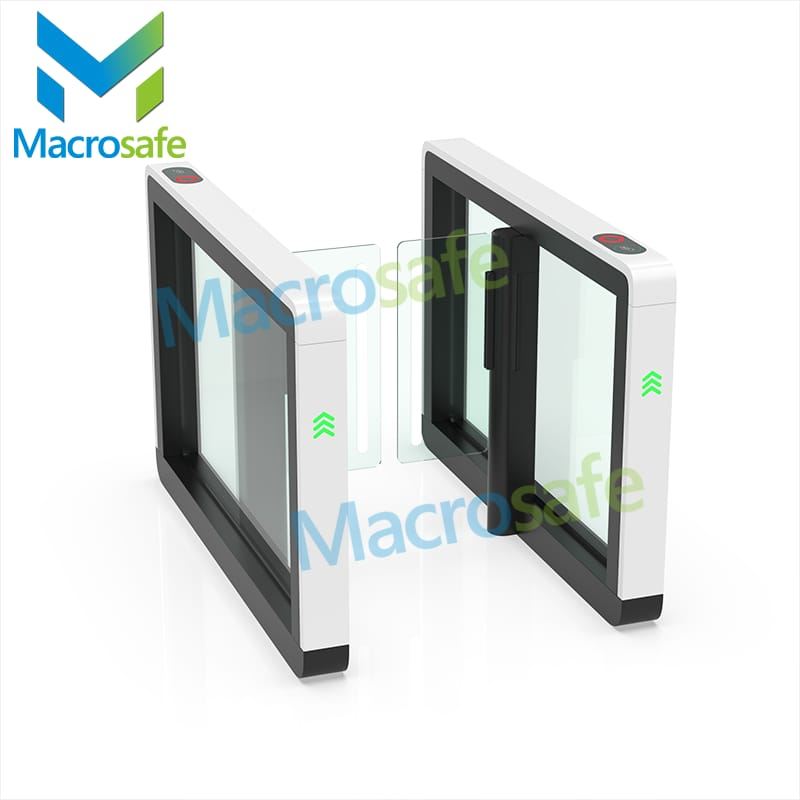Turnstile biometric access control have evolved significantly over the years and are now paving the way for the integration of smart building technologies. As the world becomes more interconnected, access control solutions are embracing smart building integration, offering enhanced security, convenience, and efficiency. This article explores the future of Turnstile biometric access controls as they integrate with smart building systems, highlighting the benefits and potential applications of this innovative approach.
1. Seamless Integration with Building Management Systems:
Turnstile biometric access controls can seamlessly integrate with building management systems (BMS), creating a holistic and intelligent approach to access control. By connecting turnstiles to the BMS, operators can consolidate security protocols, lighting controls, HVAC systems, and other operational functions into a single platform. This integration enables centralized monitoring, control, and analysis of building systems, streamlining operations and enhancing overall efficiency.
2. Enhanced Security and Identification Methods:
Smart building integration allows Turnstile biometric access controls to utilize advanced security and identification methods. With the integration of biometric authentication technologies such as fingerprint scanning or facial recognition, turnstiles can provide enhanced security features. These systems not only increase security by ensuring the identity of individuals entering the building but also offer a higher level of convenience, eliminating the need for physical access cards or keys.
3. Efficient Visitor Management:
Integrating Turnstile biometric access control with smart building systems enables efficient visitor management. By coordinating with visitor management software, turnstiles can streamline the registration, check-in, and check-out processes for guests. Visitor data can be captured and stored digitally, making it easily accessible and trackable. In addition, turnstiles can be programmed to provide real-time notifications to hosts upon the arrival or departure of visitors, improving overall security and convenience.
4. Occupancy Monitoring and Space Utilization:
Turnstile biometric access controls integrated with smart building systems can help optimize space utilization within a facility. By tracking the number of individuals entering and exiting different areas, turnstiles provide real-time occupancy data. This information can be utilized to analyze space utilization patterns, identify high-traffic areas, and optimize the allocation of resources. By leveraging this data, facility managers can enhance operational efficiency and improve the overall user experience.
5. Energy Efficiency and Sustainability:
Smart building integration enables Turnstile biometric access controls to contribute to energy efficiency and sustainability efforts. When turnstiles are connected to the BMS, they can collaborate with lighting and HVAC systems to optimize energy usage based on occupancy. For example, turnstiles can trigger lighting to turn on or off, or adjust temperature settings in specific areas only when they detect movement. This synchronized approach to energy management minimizes waste, reduces environmental impact, and supports sustainable building practices.
6. Data Analytics and Insights:
Integrating Turnstile biometric access controls with smart building systems provides valuable data analytics and insights. By continuously monitoring and capturing access-related information, such as entry times, frequency, or preferred access points, turnstiles generate valuable data that can help improve security protocols, occupancy planning, and operational efficiency. Data analytics platforms can provide facility managers with actionable insights, empowering them to make informed decisions and optimize building performance.
7. Customization and Flexibility:
Smart building integration offers customization and flexibility in access control solutions. With the ability to configure access rights based on user profiles, turnstiles can grant or restrict access to specific areas or amenities within a building. For instance, employees with different job roles or clearance levels can be granted access to designated areas, while visitors are limited to specific zones. This customization ensures enhanced security while maintaining the overall convenience and efficiency of building occupants.
Conclusion:
The integration of Turnstile biometric access controls with smart building technologies is set to revolutionize access control solutions. With seamless integration into building management systems, turnstiles offer enhanced security, efficient visitor management, optimized space utilization, improved energy efficiency, and valuable data insights. The future of Turnstile biometric access controls lies in their ability to seamlessly integrate with various smart building systems, improving the overall functionality and enhancing the user experience. Embracing this innovative approach to access control ensures buildings are more secure, sustainable, and operationally efficient in the years to come.


